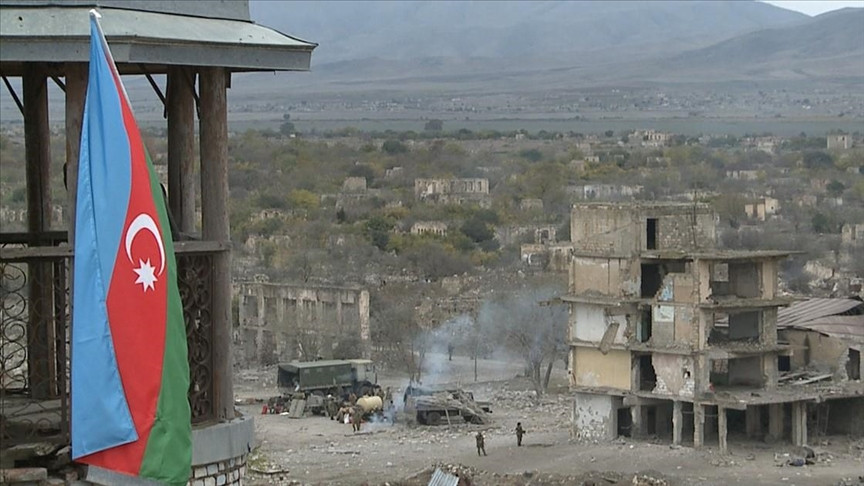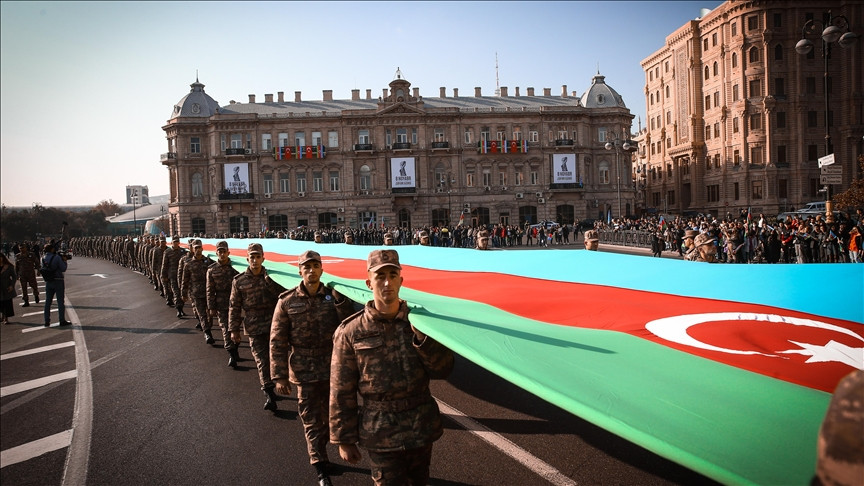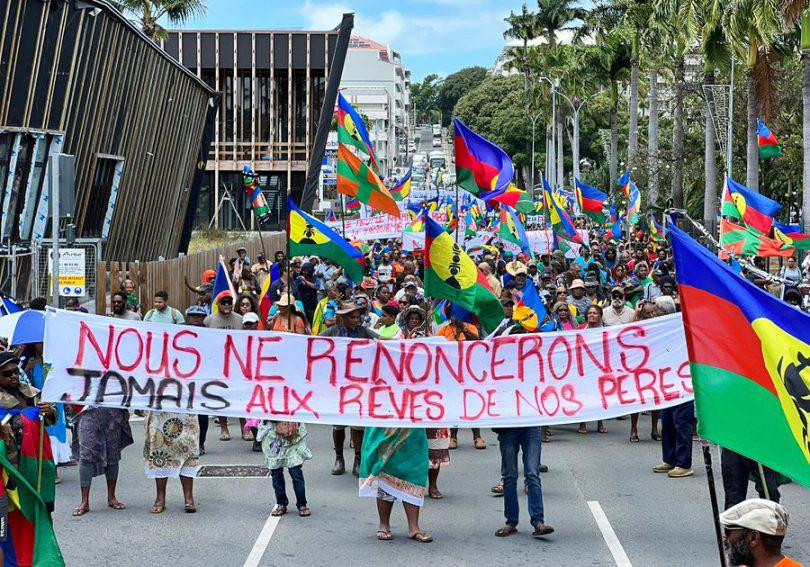The conflict between Armenia and Azerbaijan has dragged on for three decades without much progress on the part of the mediators to find a fair and durable solution. Events of 2019 and early 2020 do not yet augur well for the prospects of finding a solution.
When Azerbaijan and Armenia became independent from the Soviet Union in 1991, independence did not mark the beginning of peaceful and prosperous relations in the South Caucasus. A tinderbox of conflict erupted between the two states in the aftermath of armed military assault launched by Armenia against Azerbaijan. The war resulted in the occupation of the Nagorno-Karabakh region and seven adjacent regions by Armenia, and the region’s status has been under dispute ever since. During the war, hundreds of thousands of ethnic Azerbaijanis were displaced from the region and tens of thousands on both sides died during the fighting. The negotiation process between Armenia and Azerbaijan has continued for almost the entire duration of the conflict, since the establishment of the OSCE Minsk Group in 1992. The Minsk Group, co-chaired by the United States, France and Russia, has been mediating the conflict since 1997, and many avenues have been explored to find a solution to the conflict. However, the conflict has remained intractable.
Changes in Armenian leadership in Spring 2018 stirred hopes that new momentum could be instilled into the negotiations. On these grounds, there were elevated Azerbaijani expectations that 2019 could be the year a breakthrough would be reached in negotiations. Azerbaijani Foreign Minister Elmar Mammadyarov expressed this outlook, remarking that “We hope that in the coming 2019, certain progress will be achieved in terms of the withdrawal of the Armenian armed forces from the occupied territories of Azerbaijan and the normalization of relations between the two countries.”
In 2019, Azerbaijani and Armenian representatives had five meetings: in Paris on 16 January, with the respective leaders in Vienna on 28 March, in Moscow on 15 April, in New York on the margins of the UN General Assembly on 23 September, and in Bratislava on 4 December. Although the parties agreed to continue efforts to approach a solution to the conflict and held steady, frequent meetings in 2019, the talks did not yield any tangible results. A political solution to the conflict remained elusive.
The President of the Republic of Azerbaijan, Mr. Ilham Aliyev, therefore summarized 2019 as a “lost year for the conflict settlement.” Some experts even made references to the beginning of a “post-negotiation” phase in peace talks, implying that there could be other alternatives to determine the status of Nagorno-Karabakh outside the nonviolent mediation of the OSCE Minsk Group.
2019 was also marked by exchanges of inflammatory rhetoric between the sides. In a controversial speech on 5 August during the pan-Armenian games held in Khankendi (Stepanakert in Armenian), the new Prime Minister of Armenia, Nikol Pashinyan, added fuel to the fire by declaring that “Artsakh is Armenia, and that is all” (Artsakh is the Armenian name for the region called Nagorno-Karabakh, which is the internationally accepted name). This belligerent move by Armenia’s Prime Minister was soon rebuffed by Azerbaijani President Ilham Aliyev during his speech at Valdai discussion club on 3 October 2019, who parried by declaring that “Karabakh is Azerbaijan and exclamation mark!” Prime Minister Pashinyan also made headlines by reviving the slogan miatsum, or “unification” in Armenian, during his speech in Khankendi. Miatsum is an Armenian nationalist slogan of the 1980s and 1990s, the use of which implies that Nagorno-Karabakh region is and should be a part of Armenia. This confrontational rhetoric further aggravated the differences in positions and deepened tensions.
The past year was, nevertheless, a positive one for developments on the human track, as the first exchange of journalists in a long time happened between the parties in November, when three journalists from Azerbaijan visited Armenia and the Nagorno-Karabakh region, while the same number of journalists from Armenia also visited Azerbaijan with the facilitation of the OSCE Minsk Group. This exchange was an important step in building human connections and was pledged to happen in the aftermath of the April Vienna and Moscow meetings of the Ministers of Foreign Affairs of the two countries. All in all, the exchange was a positive move and took place without any incidents on both sides, despite some criticism from nationalist circles. The importance of such “humanitarian measures” was also underlined in the Joint Statement of the Minsk Group co-chairs after the Bratislava meeting of the Ministers in December 2019.
The first meeting of 2020 between the Ministers of Foreign Affairs of Armenia and Azerbaijan happened in Geneva from 28 to 30 January with the usual facilitation of the co-chairs of the OSCE Minsk Group. The meeting, which is said to have lasted up to seven hours, involved discussion of the “implementation of agreements and proposals discussed in 2019 and possible next steps to prepare populations for peace; principles and elements forming the basis of a future settlement; and timing and agenda for advancing the settlement process.” The absence of any tangible progress notwithstanding, this meeting was still a good start to the year in terms of keeping things active in the negotiation track.
Emotions, however, got intense when the leaders of the two countries participated in the first-ever public debate on “An Update on Nagorno-Karabakh” in Munich, Germany on 15 February during the annual Munich Security Conference. The two leaders exchanged their views about the history of the region and their vision on the settlement of the Armenia-Azerbaijan conflict, which some later described as “verbal dueling,” with, to my mind, Azerbaijani President Ilham Aliyev certainly winning the battle by providing solid factual references to the origin of the conflict, Armenia’s role as a party to the conflict, and Azerbaijan’s vision as to a solution and reintegration of the occupied Nagorno-Karabakh region. Some Armenian experts, therefore, did not hide their disappointment with the entire debate. However, the very fact of such a public debate taking place was also subject to interpretation, with some asserting that this was a Sisyphean endeavor to begin with and “counterproductive,” as the parties did not seem to be any closer to negotiating a solution to this festering sore of the South Caucasus.
On 31 March, amid the global COVID-19 pandemic and massive lockdowns in the world and in the South Caucasus, so-called “presidential and parliamentary elections” were held in the Nagorno-Karabakh region. The European Union in its statement noted that “In view of the so-called ‘presidential and parliamentary elections’ in Nagorno-Karabakh on 31 March 2020, the European Union reiterates that it does not recognise the constitutional and legal framework within which they are being held. This event cannot prejudice the determination of the future status of Nagorno-Karabakh or the outcome of the ongoing negotiation process.” The statement by the OSCE Minsk Group Co-Chairs was along a similar line: “Accordingly, the Co-Chairs do not accept the results of these ‘elections’ as affecting the legal status of Nagorno-Karabakh and stress that the results in no way prejudge the final status of Nagorno-Karabakh or the outcome of the ongoing negotiations to bring a lasting and peaceful settlement to the Nagorno-Karabakh conflict.” As obvious from the above statements of the two organiztions, the holding of these so-called “elections” in the region in no way contributes to, rather creates more bumps on the road to, the attainment of peace.
Many opportunities have been lost so far to find a fair and durable solution to the Armenia-Azerbaijan conflict and achieve a lasting peace in the region. Azerbaijan seeks the restoration of its territorial integrity in accordance with international law and four UN Security Council resolutions (822, 853, 874, 884) and the return of the Nagorno-Karabakh region and seven adjacent districts. Azerbaijan advocates for its internally displaced persons to return to their homelands before negotiating the final status of the Nagorno-Karabakh region, which it argues must be within Azerbaijan, and is ready to grant it the highest degree of self-rule. Armenia wants the opposite: to maintain the status quo by keeping the territories under its control and insisting on defining the final status of the Nagorno-Karabakh region first and foremost, which implies independence for the region.
The parties’ positions are diametrically opposed and have changed little since the onset of the conflict and subsequent negotiation process. Although the developments witnessed in 2019 and early 2020 also do not bode well for the prospects of finding a solution soon, one still wishes to believe that 2020 could be a year that takes us one step further towards peace.








